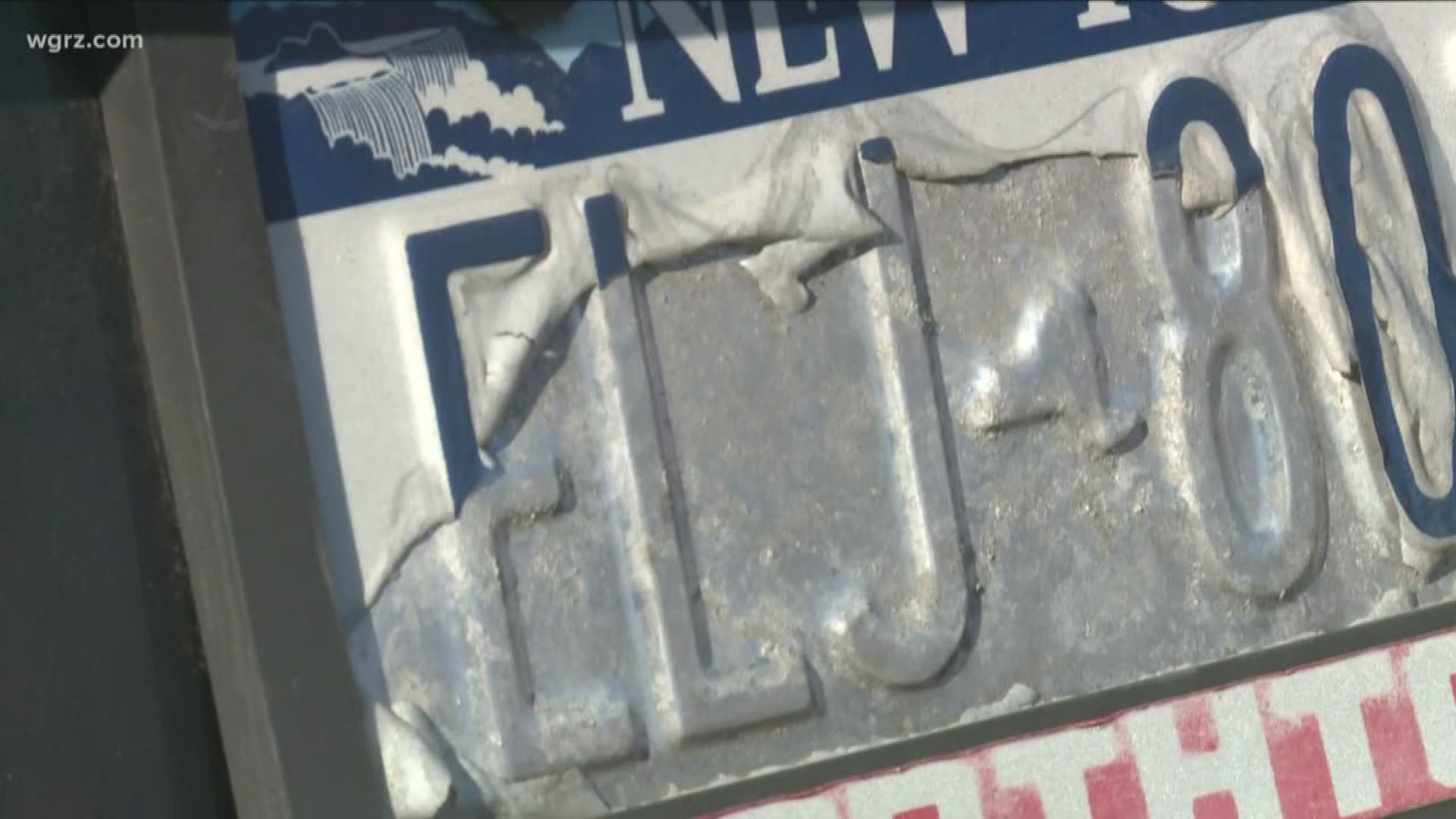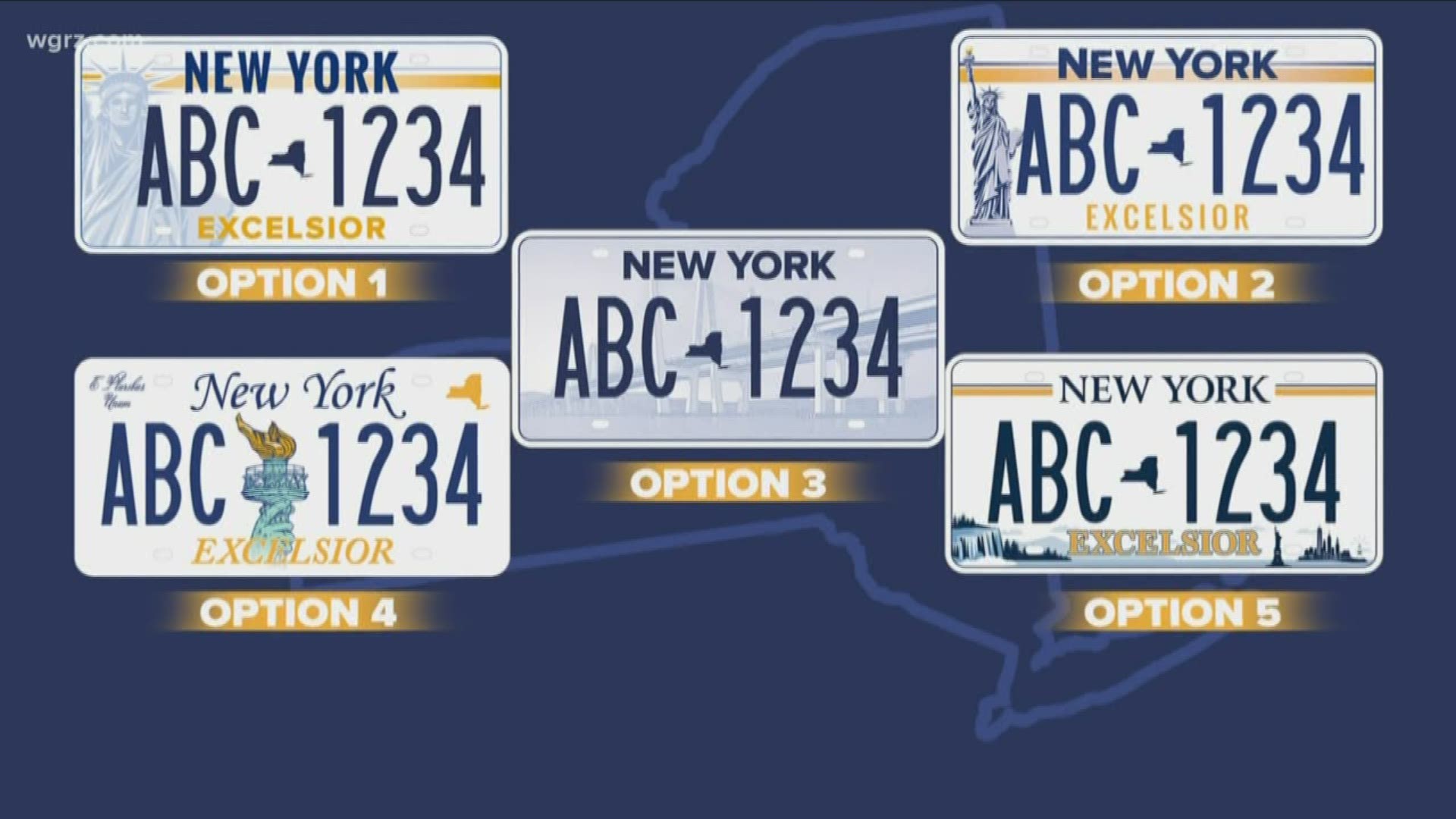BUFFALO, N.Y. — There are still many questions regarding the Cuomo administration forcing those who own blue and white license plates — that are more than 10-years-old — to buy new ones starting in April.
One question is whether the new plates will be any more durable than the current ones, which have been peeling.
Erie County Clerk Mickey Kearns, who oversees auto bureaus in and around Buffalo, says he continues to see about 300 defective plates a month.
As 2 On Your Side reported in July, the plates are manufactured by inmates at Auburn Correctional, through a process involves attaching a laminated, printed cover to the plate. The sheeting applied to the plates is made by 3M Corporation, which held a five-year, nearly $6 million contract with the state to supply it.
2 On Your Side learned Wednesday that the contract will expire in 10 days, and when it does, the state has already agreed to go with another company, the California-based Avery Dennison Corporation, to supply what 3M had been supplying.
That contract with the new company is a two-year, $4 million deal, which is significantly more per year than what the state was paying 3M.
Precisely why the switch was made remains unclear.
When 2 On Your Side reached out to the NY State Department of Corrections to ask why its prison industry arm, Corecraft, switched vendors and if it did so due to problems experienced with peeling plates or if it was dissatisfied with the product 3M had been providing, agency spokesperson Thomas Mailey emailed the following statement.
"All license plates will continue to be produced by civilian staff and incarcerated individuals at Auburn Correctional Facility. The production process itself will not be changing; however, DOCCS has signed a contract with a new vendor, Avery Dennison, that will be supplying the sheeting for the new plates. DOCCS and all its vendors continually review and evaluate all of its programs for quality and effectiveness."
The contract was approved on July 31, several weeks before the governor announced the new license plate program, potentially indicating that the state knew it was going to make a lot of new license plates before it told the public that 3 million of them would need to be replaced starting next year.


